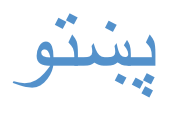The Global Future Cities Programme
Overview
Fast-growing cities in emerging economies such as Brazil, Indonesia, South Africa, and Turkey, are often drivers of growth and development. By 2025, roughly 440 cities in emerging economies will contribute to nearly half of global economic growth. If well managed and planned, urbanisation in rapidly developing cities can be transformative, creating jobs, reducing poverty, and improving citizens’ quality of life.
The cities participating in the Global Future Cities Programme vary in size from megacities to intermediate cities and in age from ancient to as yet unbuilt. There are coastal cities vulnerable to sea level rise and cities in seismically active zones vulnerable to earthquakes. Some cities are ethnically and religiously homogeneous while others are more diverse. These cities are among the world’s most dynamic economies as well as among those that have not yet realised their full potential.
These urban agglomerations represent enormous potential for future prosperity and sustainable development. By overcoming barriers and enhancing enablers for sustainable urban development, cities have the opportunity to address educational opportunities, wealth, job creation for men and women, and reducing inequality. They also will play an as essential role in delivering the United Nations’ 2030 Agenda for Sustainable Development, namely the Sustainable Development Goals (SDGs), Paris Agreement on climate change, Sendai Framework on Disaster Risk Reduction and New Urban Agenda. Collectively, these agreements offer a blueprint to a more sustainable planet by 2030 and beyond. While national governments are responsible for meeting the goals of these various agreements, it is also the responsibility of cities and local governments to reach those goals. As home to the majority of the world’s population, cities are vital to reducing greenhouse gas emissions, eliminating poverty and ensuring preparedness in the face of natural disasters.
More languages:
Audio:
In October 2017, one year after the Habitat III Conference, the New Urban Agenda was published in audio version in the six United Nations official languages as part of the Habitat III legacy project, making it accessible to persons with disabilities. The translations were possible thanks to the collaboration with the Victor Pineda Foundation and World ENABLED.









